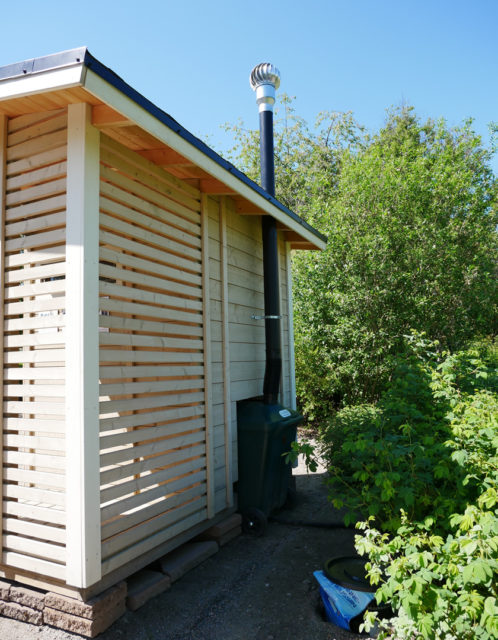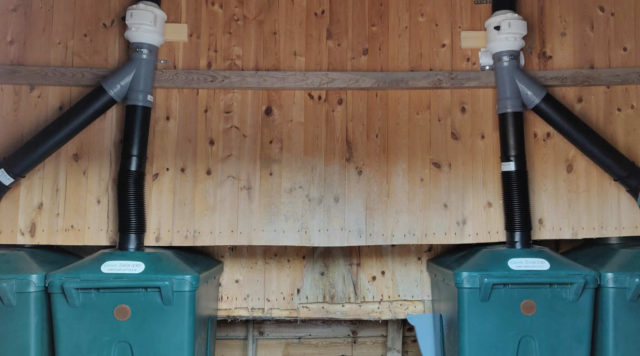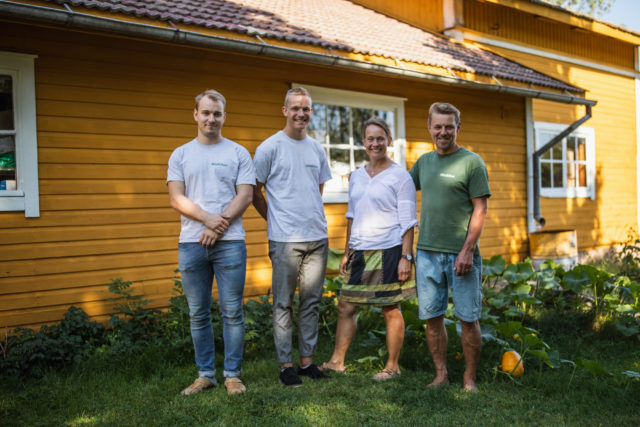
Ventilation of dry toilets
In this blog post we are focusing on ventilation of dry toilets and the different options available. First of all, it should be noted that by ventilation we refer to the airflow inside the compost or other toilet model, not the toilet building space itself.
Ventilation is one of the most important factors in making a well-working, odorless dry toilet. Without proper ventilation, there is a greater risk for unpleasant smell in the toilet. Ventilation is therefore to remove the potential odors in the dry toilet. In some of the cases, particularly with post-diverting compost toilets, the ventilation also has a role in reducing the amount of liquid in compost. Especially in warm climate, a significant portion of the urine in a compost toilet can be evaporated through ventilation which means that there is less liquid to be handled afterwards. There are of course many ways to treat the liquids coming out of the dry toilet, as for example a special filter, but generally the ventilation is also good for reducing the liquids in dry toilet.
Dry toilets with no ventilation
There are lots of dry toilets without any ventilation and for a purpose. In many cases it is simply impossible to set up ventilation pipes where the dry toilet is needed. Consider for example apartment buildings or RVs. Usually, these dry, portable toilets are only for little temporary use which is why the ventilation is not as important as in other more frequently used dry toilets. Should you plan a dry toilet without any ventilation, we recommend increasing the usage of dry organic material (e.g. wooden pellets). This is to have the urine absorbed in the dry material and hence prevent undesired smell issues. The only exception in which ventilation or dry materials are not necessary are freezing toilets. Freezing toilets like the Privetti require no ventilation since they freeze all toilet waste making it completely odorless in minutes.
Dry toilet ventilation without electricity
Dry toilets are often used in places without electricity available. Yet, there are many ways to have a sufficient ventilation system for the toilet. Important is to avoid unnecessary bends and curves in the ventilation pipes, particularly U-shape curves are bad for the natural airflow. In addition, we recommend using a rotating wind fan whenever possible as it creates low but efficient vacuum into the ventilation piping. The wind fan can also work as a backup fan for the electrical fan in the case of power breakout.

Dry toilet ventilation with an electrical fan
Electric fans are most common for dry toilets that are used indoors. We recommend electric fans for all indoor installations to prevent potential odors coming into the house. We say “potential” because the majority of modern dry toilets are almost odorless already without any fan, thanks to separation of liquid and sold waste. Still, to be absolutely sure that there are zero problems of smell at all times, electric fan works as an affordable insurance.
There both dry toilets with built-in and exterior electric fans. The built-in fans are most often at the back of the dry toilet while the exterior fans are usually located at some point along the ventilation piping. Electrical fans used in dry toilets mainly use only little power so that there is no cost savings in switching the fan on and off. Thus, we recommend keeping the fan on constantly while the toilet is in use and there is waste inside. The only exception in this maybe RVs and boats with battery in which a switch might be needed.
For our catalog of electrical dry toilet fans you can find a 110 mm and 75 mm duct fans. Both of these are exterior fans installed along the ventilation piping and can be used in or outdoors. The fans have IP rating 2 meaning they resist water that hits the fan at a 15° angle or less. In practice, this covers light rain, but for the extreme weather conditions we recommend boxing or some other homemade shelter for the fan. In the case of electric fans, the ventilation piping does not have to be that straight as in the case of non-electrical ventilation. Finally, we will note that ventilation from multiple dry toilets can be combined into single electric fan whenever it is convenient to the toilet superstructure.

If you have any questions regarding dry toilet ventilation or anything, let us help you by contacting [email protected]!

 Suomi
Suomi

